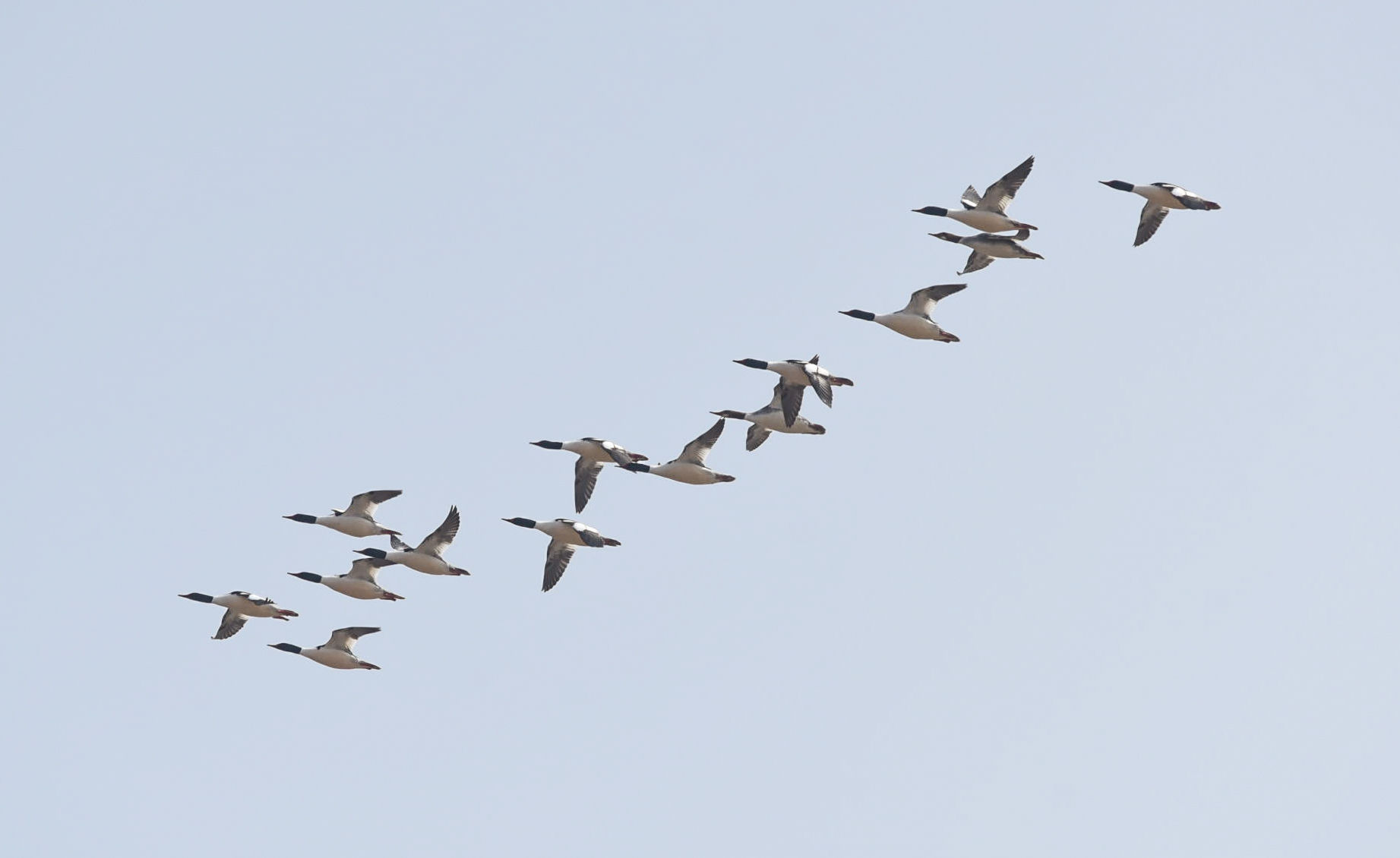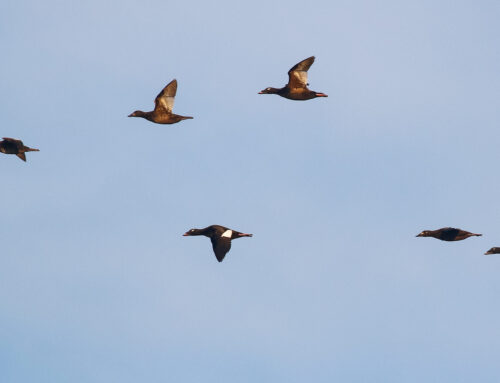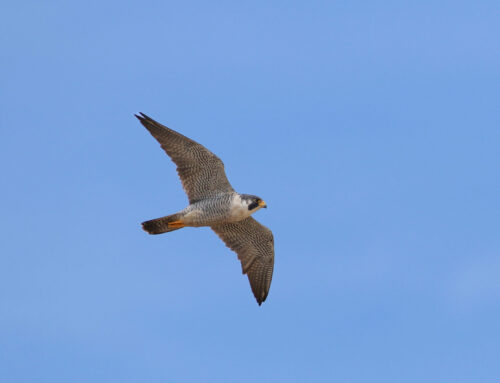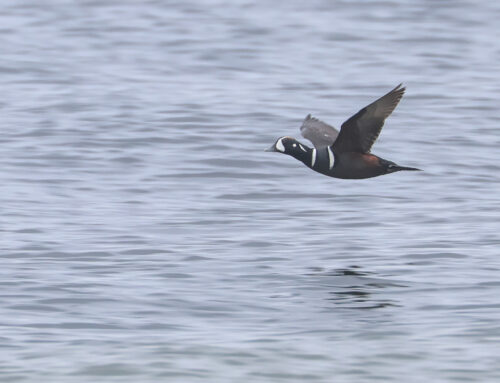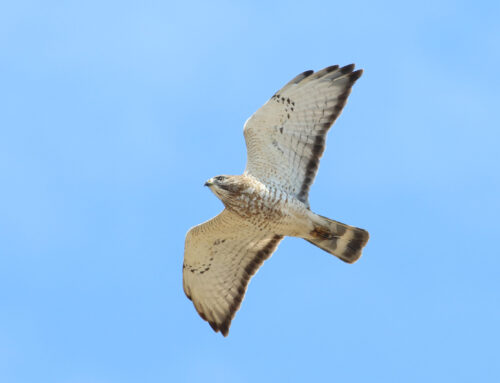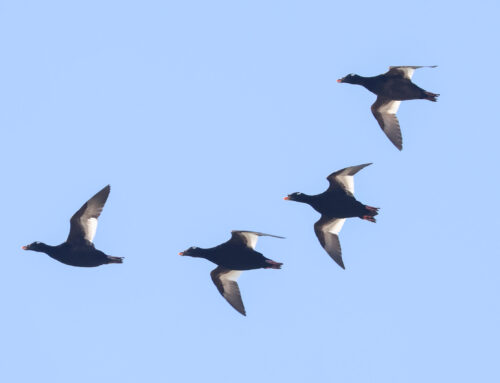It’s been a fairly quiet week at the waterbird count, with conditions ranging from not-that-bad (light northerlies, dry skies, and little flocks of Common Mergansers) to pretty terrible (snow squalls, strong northerlies, zero visibility, zero avian movement). So it goes during spring on Superior.
We’ve had our first White-winged Scoters (showing first on April 21; no flocks, yet) and our first Caspian Terns (on April 22, six passed by, pausing to bomb a Bald Eagle on the beach before setting off towards Batchawana Bay). April 25 and 26 brought prominent Common Merganser flights (respectively, 70 and 80 seen on those days — last spring’s peak, 49, was on April 24.) This is a common species here — and not just in name. However, seeing the flocks will always thrill me. Lake Superior’s landscape is built from challenging elements: to me, one of these is the degree of difficulty involved in deciphering a flock of fast-traveling waterbirds into name and number.
Loon movement, a favorite flight of mine anywhere, is also gaining momentum. April 25 was my first double-digit loon day; today, April 26, I had 52 Common Loons and seven Red-throated Loons. I expect to have a triple-digit day within the next week and the peak to happen in the next 10 days. Red-necked Grebes (which, like loons, trail their feet in flight) had a big push today; perhaps, the 119 tallied will be the season’s peak.
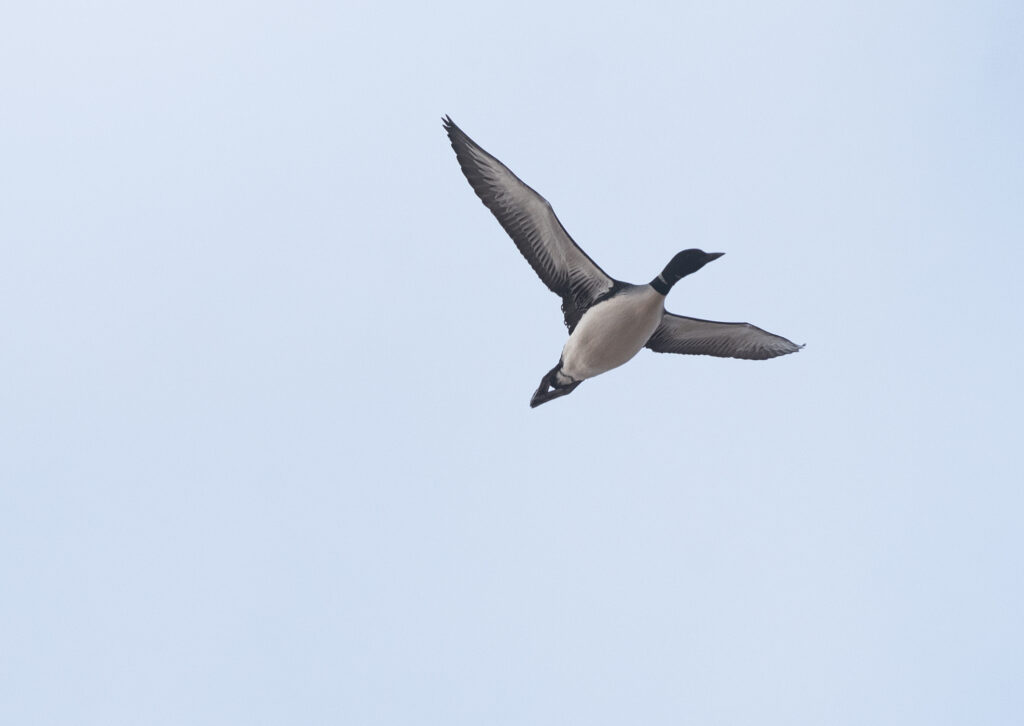
A Common Loon flies over the waterbird shack. Photo by Alison Világ
Less-common highlights from this week include a Harlequin Duck (April 22) and a Short-eared Owl (April 23). The owl arrived on the beach the same afternoon that Northern Michigan University’s field ornithology class did — a wonderful surprise on a day with brisk winds and no waterbird migration. Short-eared Owls are the bird that made me a birder; now, they’re an indicator species of sorts — their presence makes me feel like I’m in the place I should be. I was glad to have one this early in the count.
However, the most provocative movement at the Point this week has been this current of wanting. It swirls over and around, permeating everything, typifying the season. It’s in the Sandhill Cranes that mill above the beach, contemplating the water crossing. You’ll find it lingering in the salamander remains on Whitefish Point Road if you kneel down with them to grieve the soft bodies that traveled — too slowly — between hibernaculum and vernal pool. I sensed it when my truck crossed the 200,000-mile threshold during my own spring return to WPBO: when you’re a person with a wide range and impermanent habits, you feel such things. We’re all just trying to get somewhere, right? And we’re eager for the winds to shift; the conditions to become more favorable.
As always, thank you for reading.
~ Alison Világ
2023 Spring Waterbird Counter
Featured photo: A small flock of Common Mergansers flies over Whitefish Point. Photo by Alison Világ
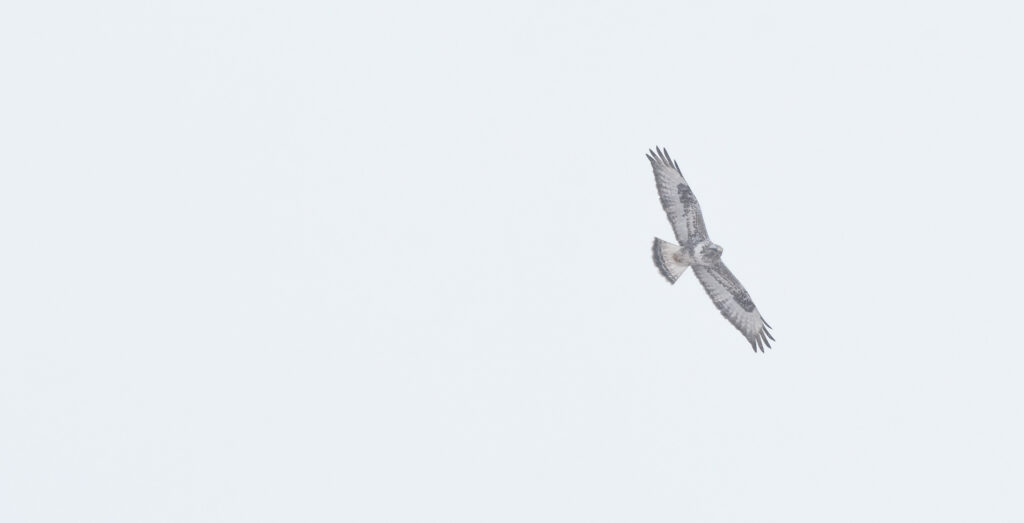
A Rough-legged Hawk getting somewhere (eventually, the tundra!). Photo by Alison Világ

